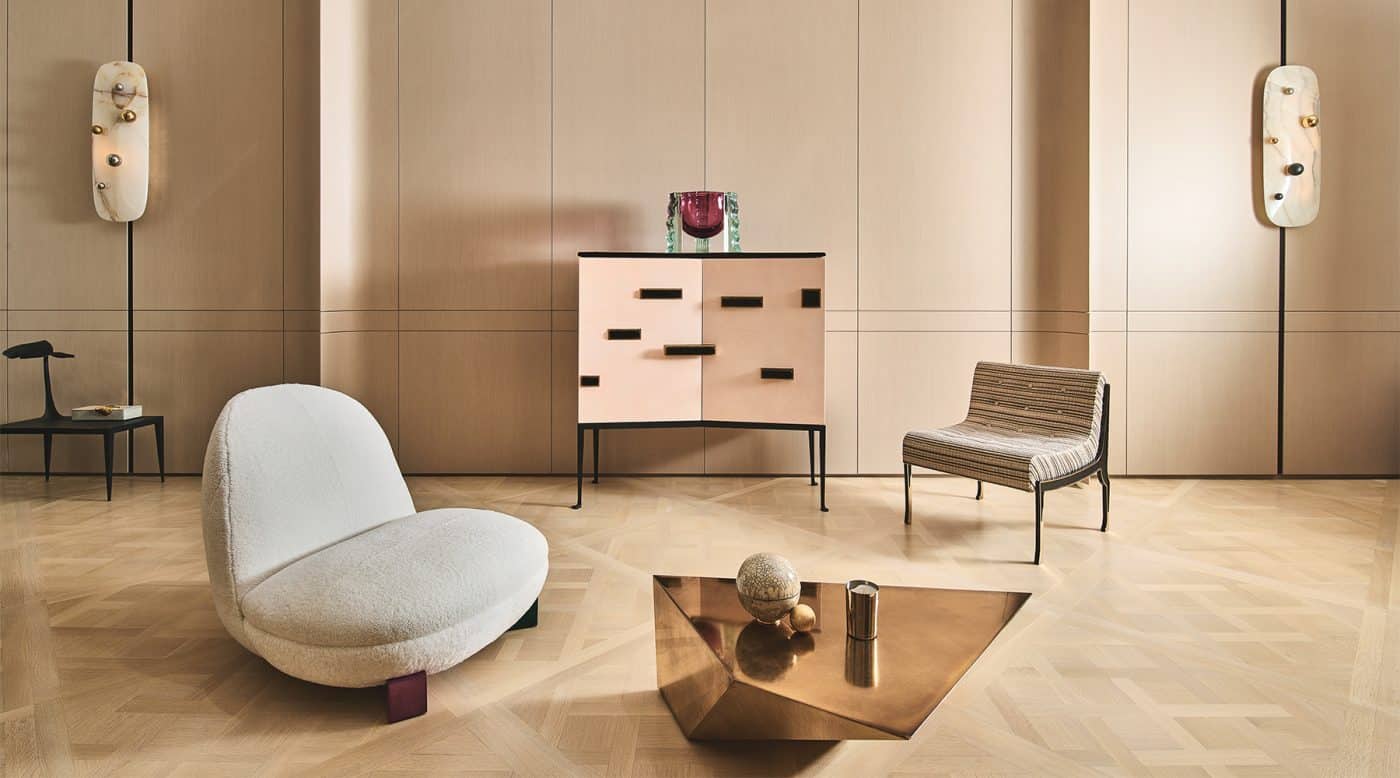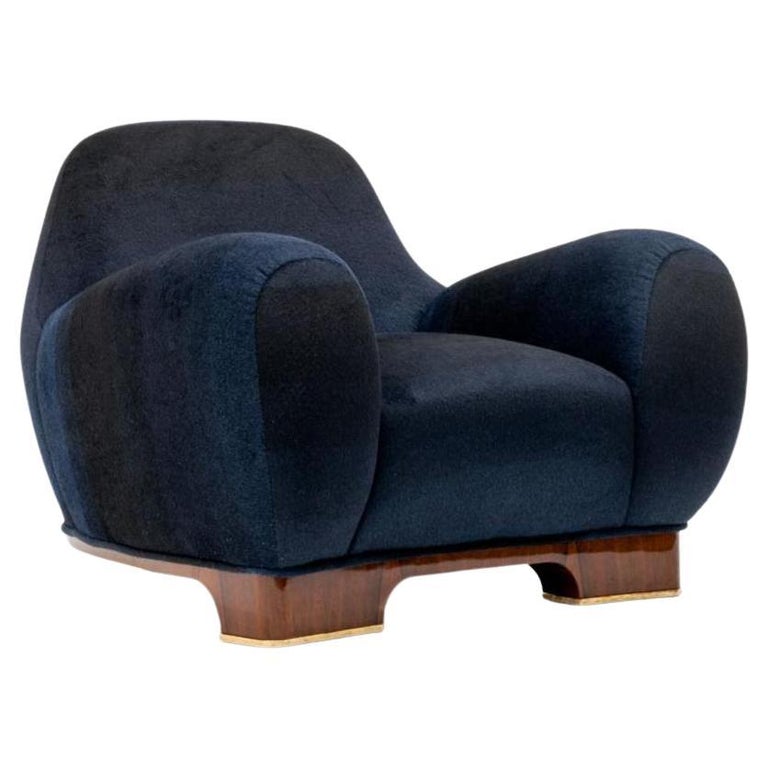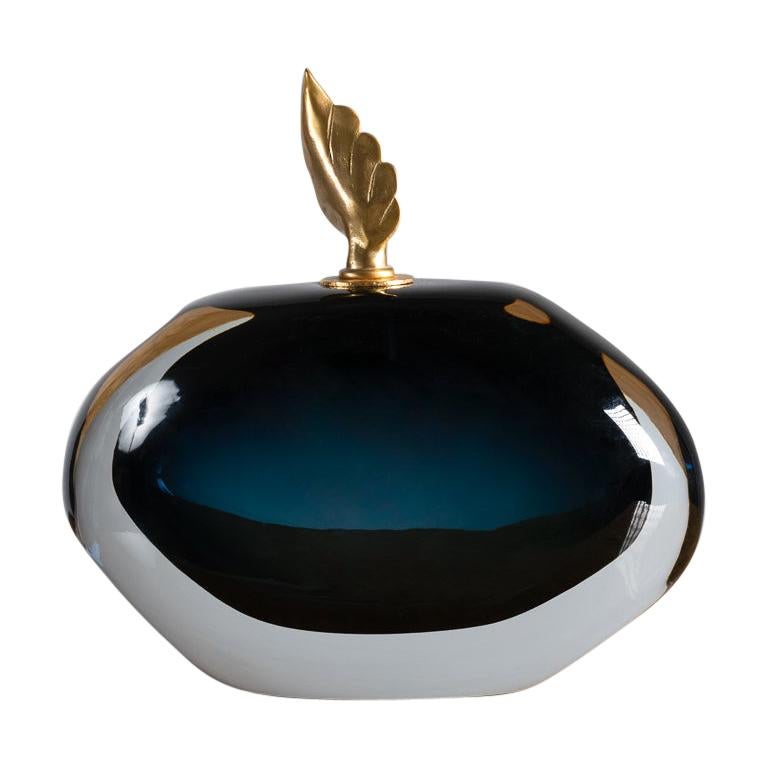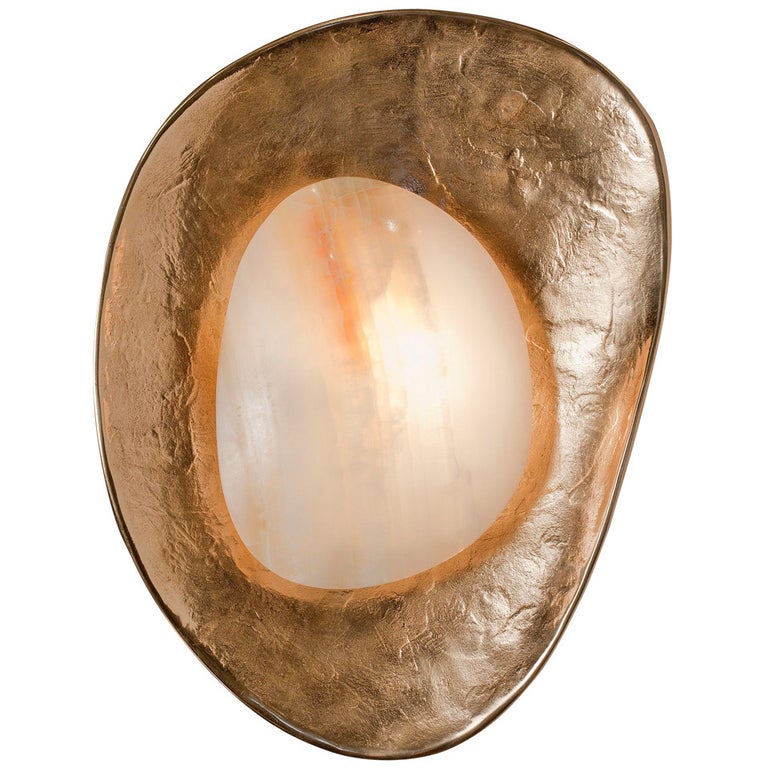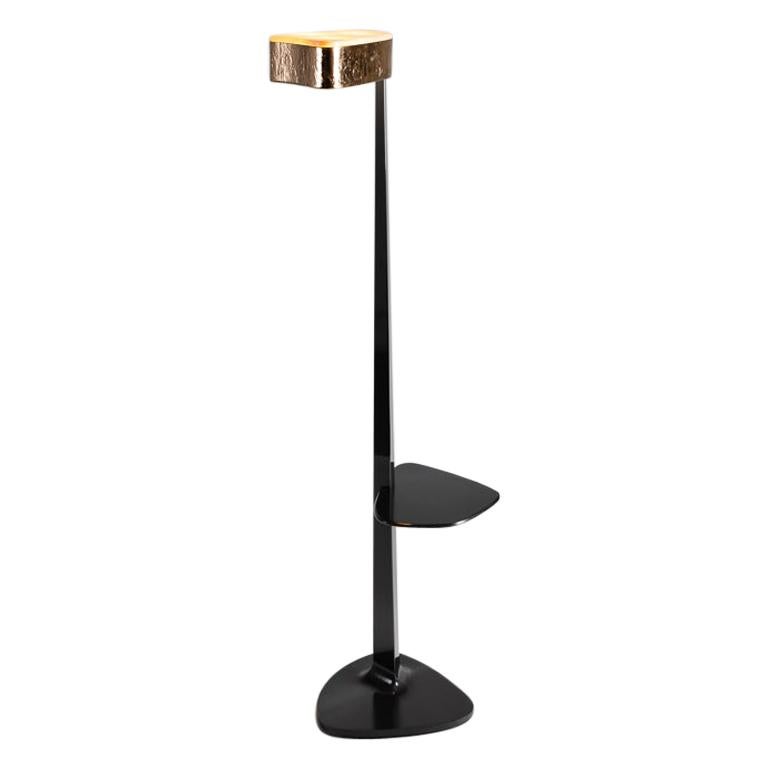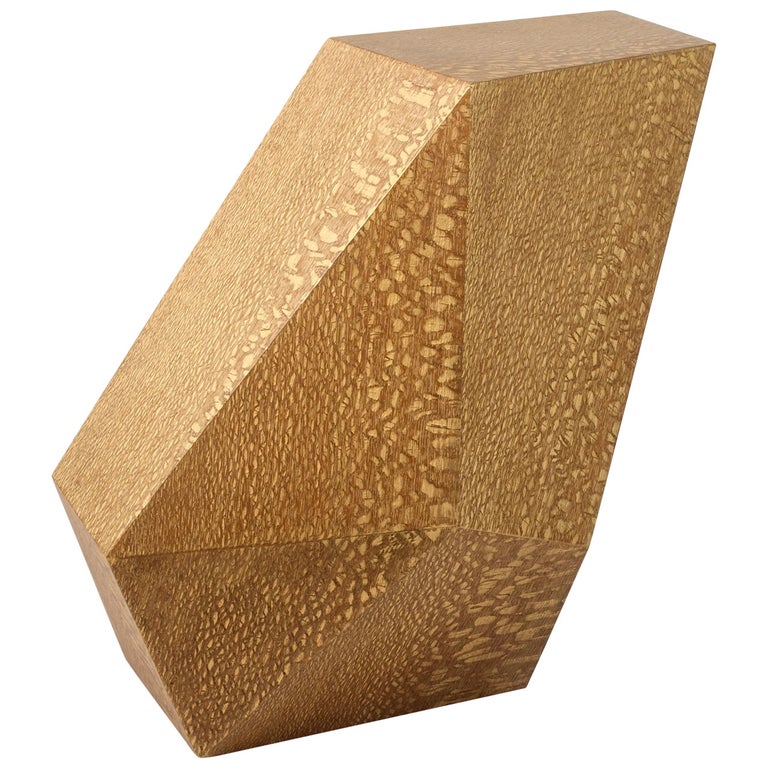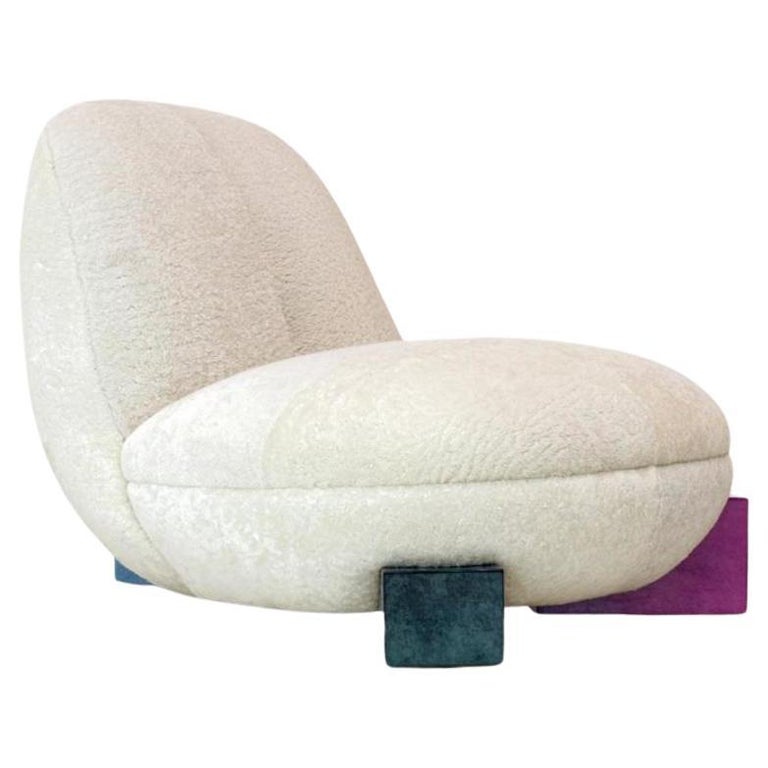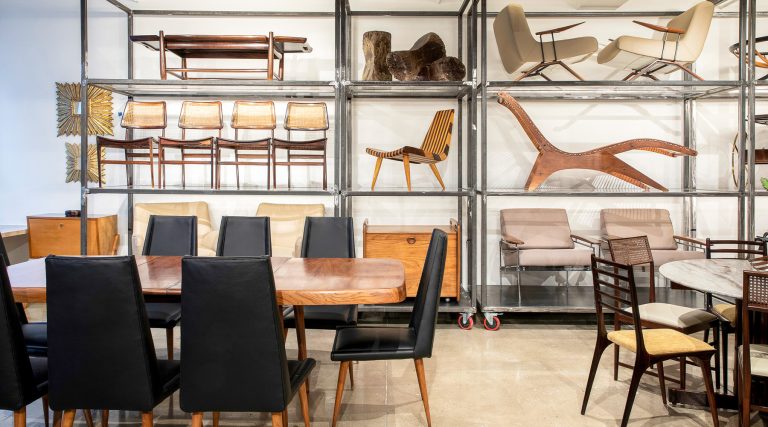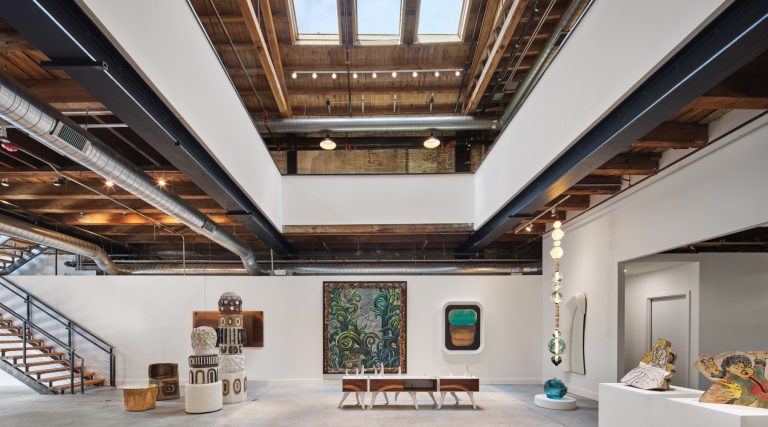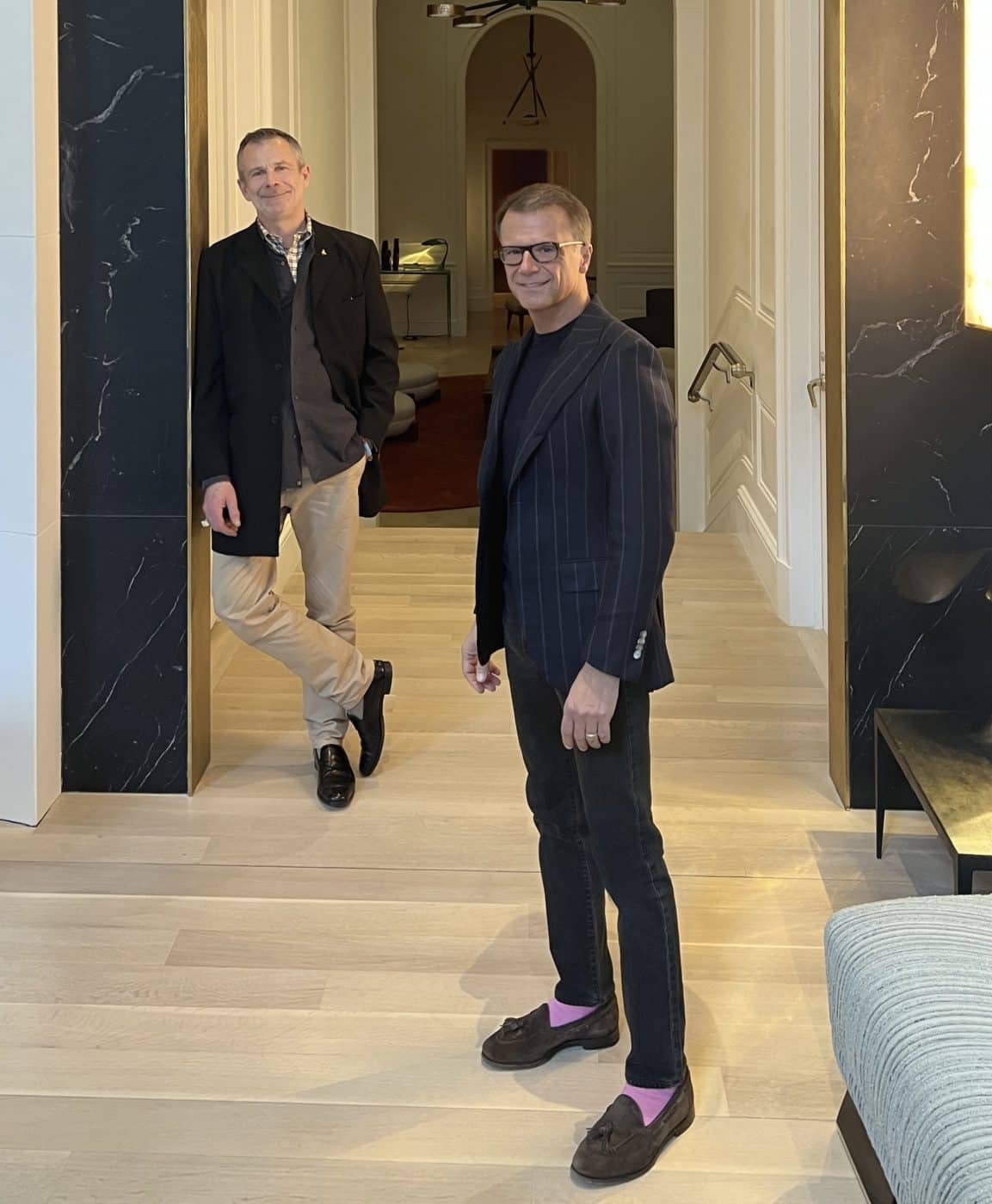
February 5, 2023Benoist Drut, the owner of Maison Gerard, the nonpareil emporium of furniture and decorative objects with two locations on New York’s East 10th Street, is suddenly spending a lot of time uptown. For nearly a decade, Drut has been showing the work of the Roman architect and designer Achille Salvagni to collectors at Maison Gerard. But now, the two men have opened an Upper East Side Manhattan gallery that Drut calls “a place to discover the WORLD OF ACHILLE.”
It occupies a series of gracious rooms, some with 25-foot ceilings, that step down from Madison Avenue. The space had once been a Donna Karan boutique. It then became a sales office, designed by Salvagni, for a high-end condo building for which he did the interiors. When the apartments sold out, the 4,000-square-foot space became available. And he and Drut decided to take a chance on it.
“In terms of bricks and mortar, I’ve never gone above Tenth Street,” Drut quips, “but this space was too good to resist.” He calls the finished interior, with Salvagni touches like a curved, fluted wall and paneling fabricated in Italy from koto, a honey-colored wood, “a sanctuary.”
Drut’s interest in Salvagni’s work extends beyond its commercial potential. Asked to name a piece of furniture by Salvagni that he particularly likes, the gallerist jumps up, grabs the Milano chair he’s been sitting in and hugs it like a long lost friend.
True, its surface is sheepskin, which makes it irresistible. But Drut is particularly enamored of its three stout wooden legs, covered in parchment and lacquered in surprisingly bold colors. To display each hue, Drut spins the chair around, seemingly too excited to notice its weight. (Later, he jokes that — given the designer’s love of bronze, marble and very hard woods — if a piece isn’t heavy, it isn’t Salvagni.)
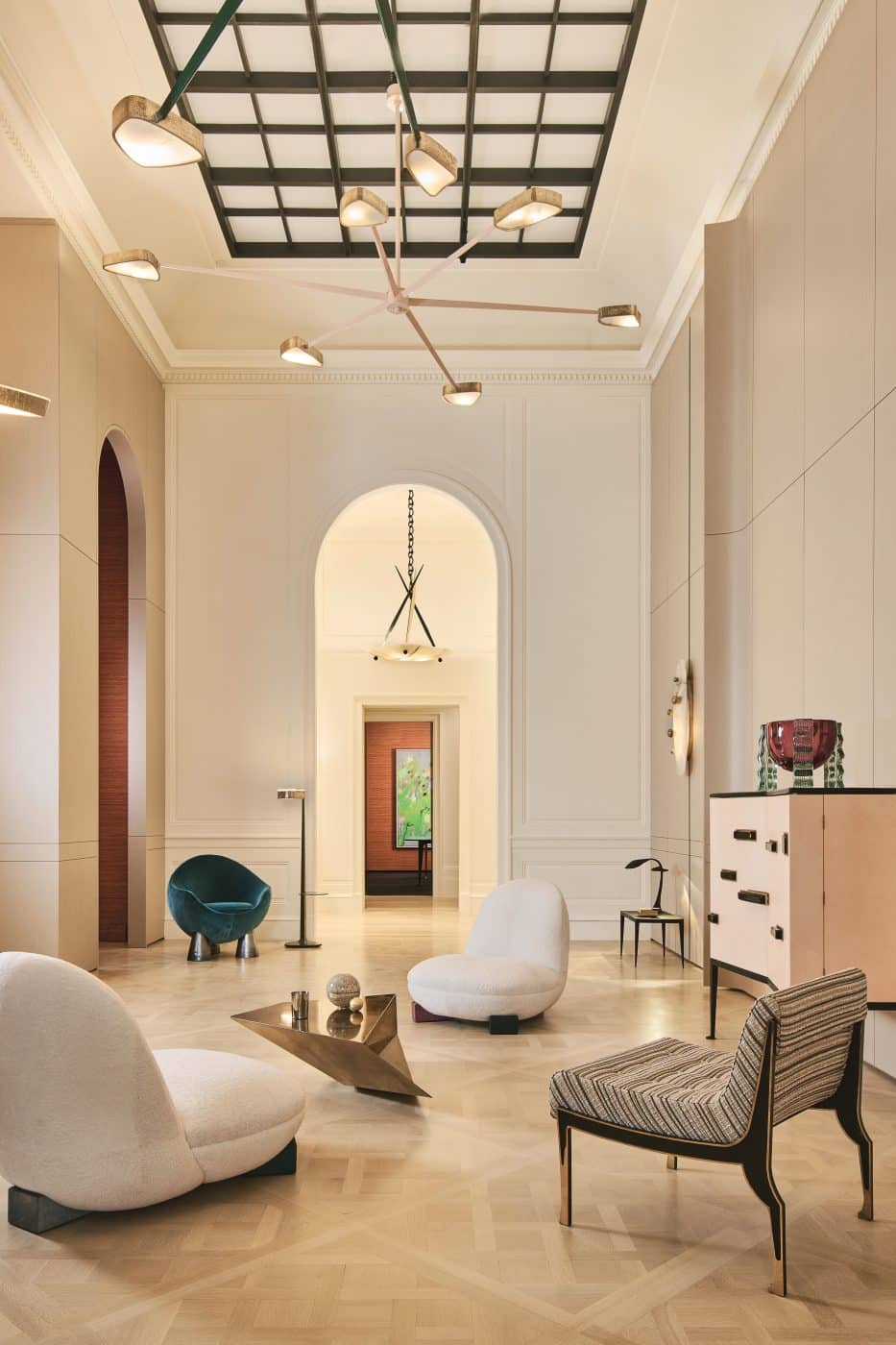
A soft-spoken man who doesn’t like to be the center of attention, Salvagni saves the drama for his work. Overhead are several variations on his Spider chandelier, which was introduced at Maison Gerard in 2013. Now, he is taking the original in new directions, with versions that are bigger (Spider Maximus) or in brighter colors (pink and green). After almost a decade of strong sales, Salvagni believes he can afford to be more daring, more idiosyncratic. “The more my pieces are welcomed by collectors, the more I feel comfortable to dare,” he says. He describes himself as half artist, half designer, and while a designer has to consider practicalities, “the artist can create in order to feed his soul, to fulfill himself and not care about commerce.” A neutral color, he points out, might sell faster.
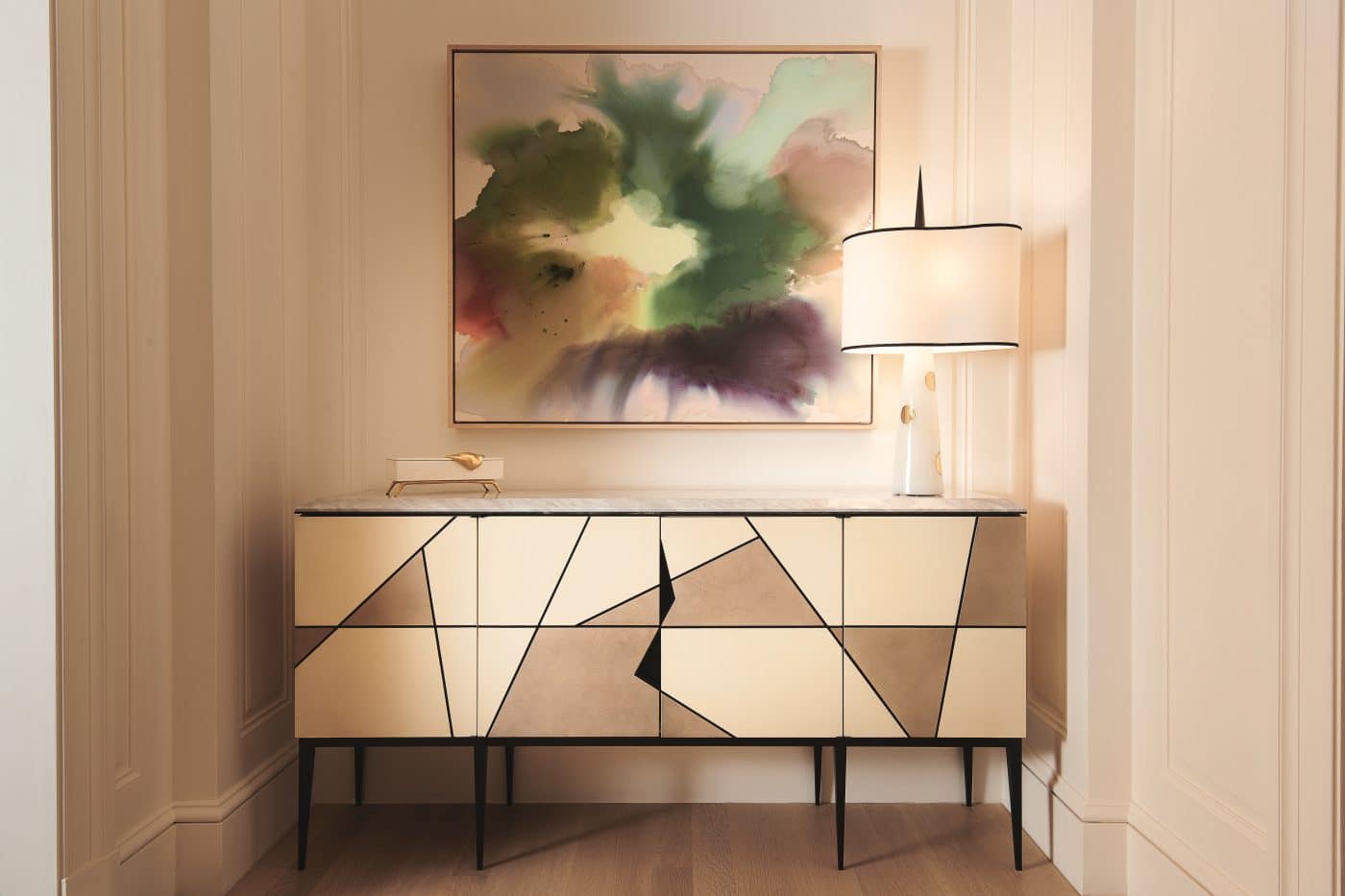
The Spider Maximus over his head illuminates a spectacular asymmetrical coffee table made of lacewood, its surface as intricate as a doily yet lustrous enough to reflect the chandelier perfectly. The only thing interrupting the reflection are three stunning jewelry boxes of polished brass with handles of raku ceramic.
The boxes are part of the Aldus collection, a collaboration between Salvagni and his cousin Fabio Gnessi, also a Rome-based architect. Their goal is to explore the aesthetic heritage of ancient Greece and Rome in small objects, including trays and candlesticks.
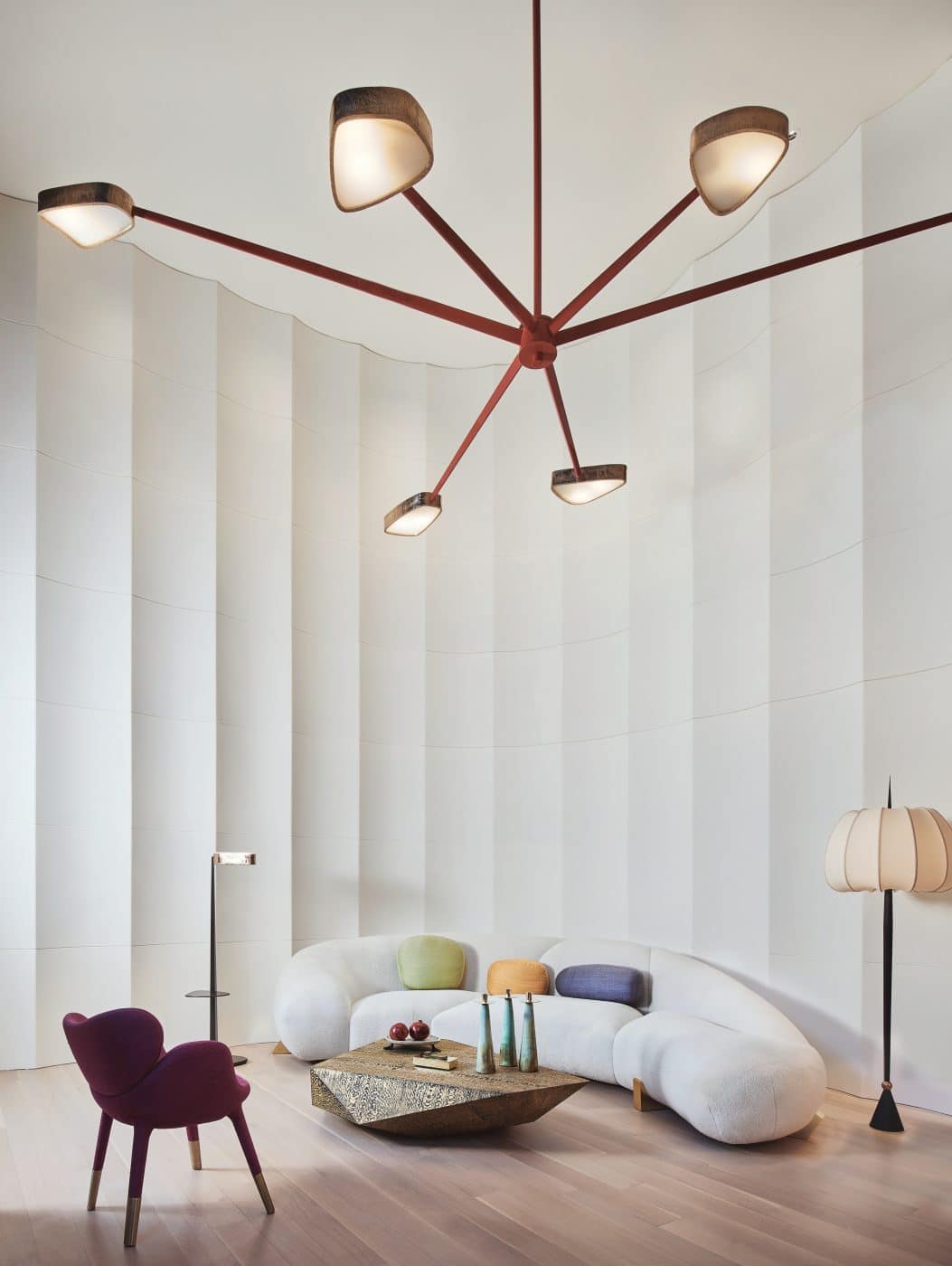
Another new direction is exemplified by a piece called Linneo, in which a lamp seems to be growing out of a bronze tabletop. To Salvagni, it’s about “demolishing a familiar shape with an accident of creation — a compromise between the natural and the manmade.” It’s a rare Salvagni design meant to fit in a small space. That means Ikea might knock it off, but probably not with Salvagni’s 24-karat-gold fittings.
Several other designs in the store are Salvagni classics, like his Gio cabinet (named for his idol, Gio Ponti) and his Bubbles table lamp (named for its shape). A piece from an early edition will cost about twice as much as it did in 2014, when Salvagni was hardly known on this side of the Atlantic. As for what a collector can get when reselling a work, the sky’s the limit. Several houses with interiors entirely by Salvagni have sold in the last few years, their furnishings and fittings adding millions to their prices.
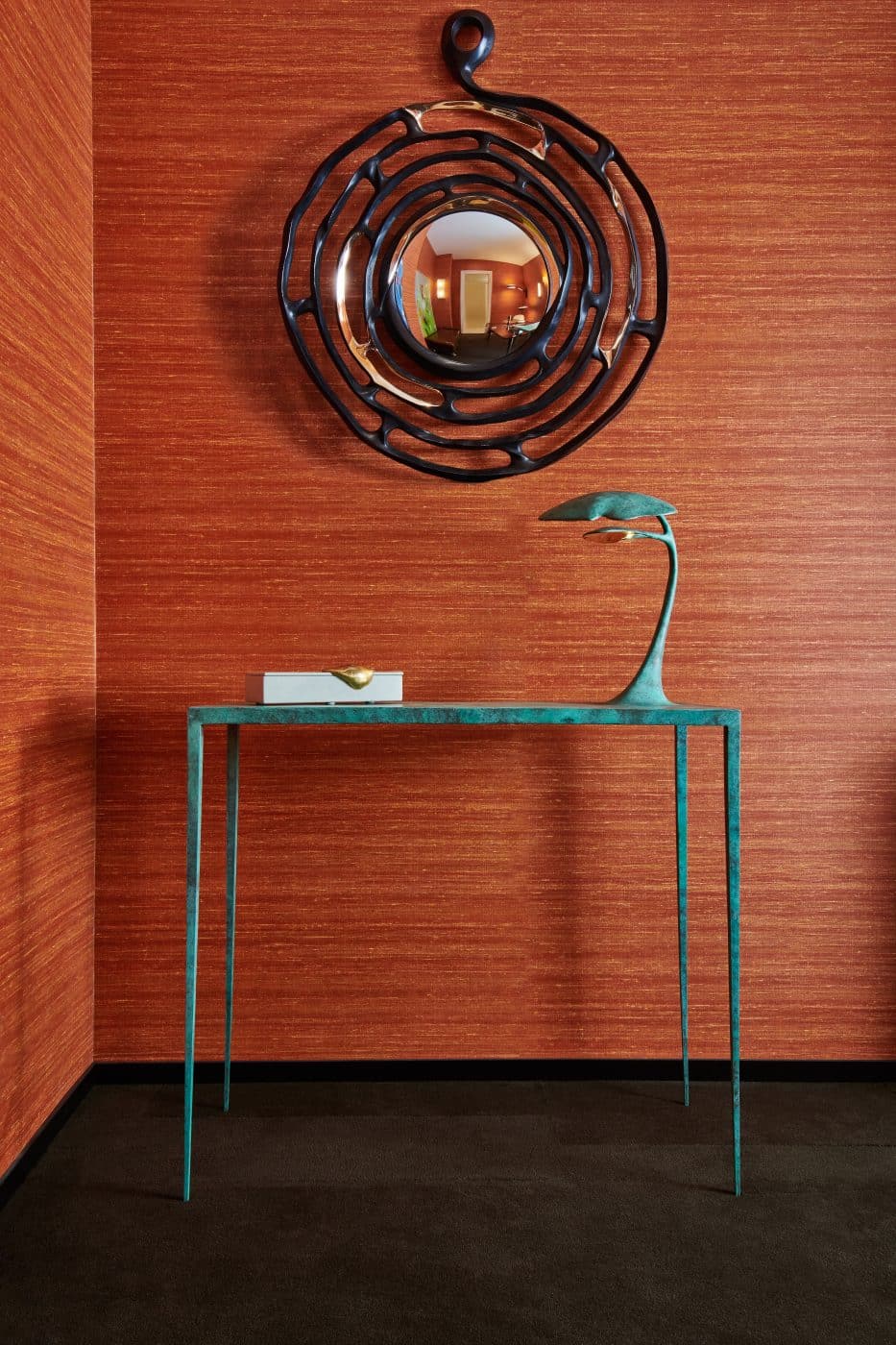
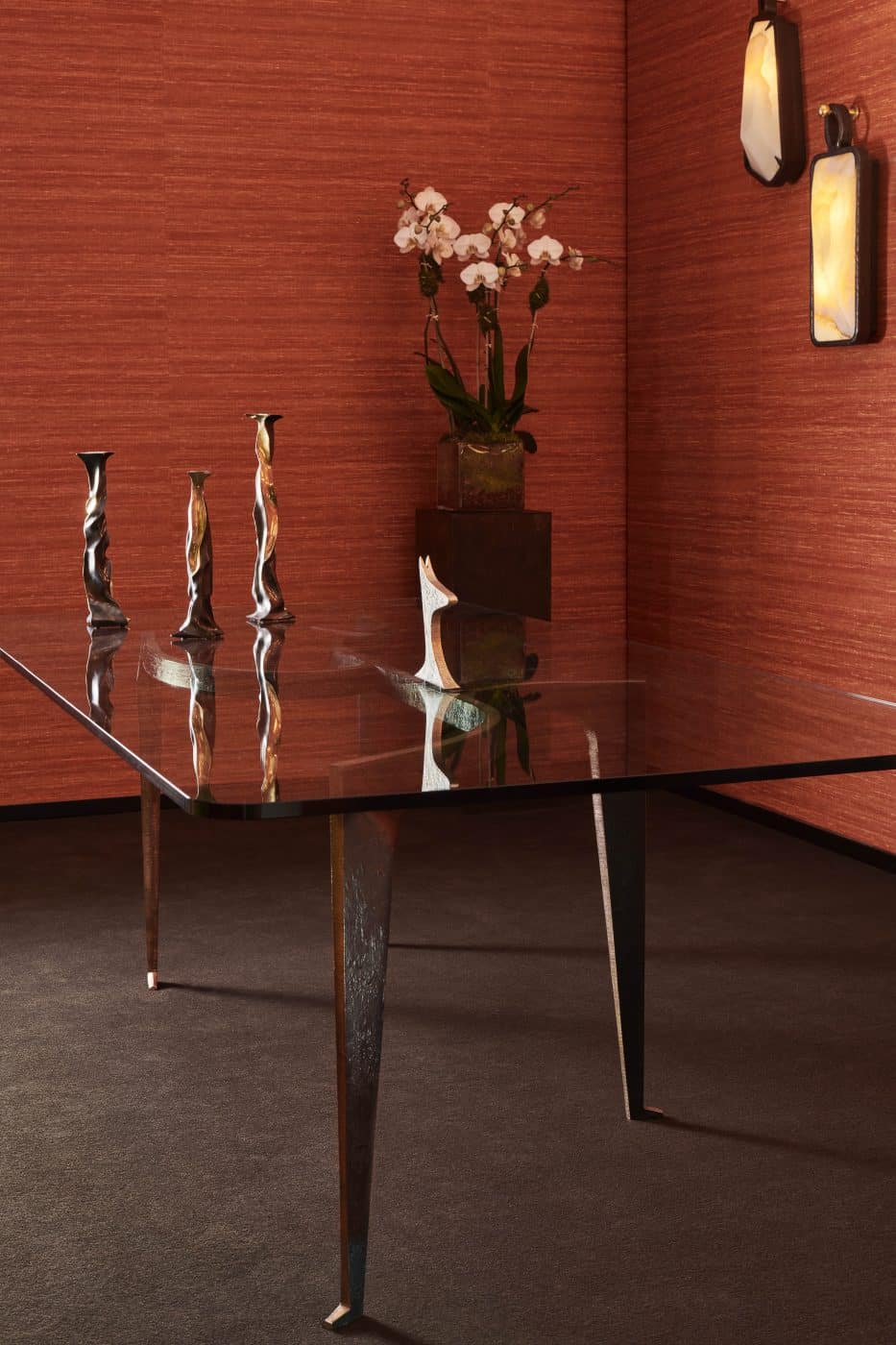
After opening an architecture office in Rome in 2002, Salvagni mainly designed complete interiors for houses and yachts. When he began thinking about selling pieces individually, he came to New York to meet dealers and quickly clicked with Drut. “We’re completely different,” Salvagni says of his biggest promoter. “But we have the same sensibility about beauty. We have different processes, but we end up in the same place.”
They soon found that Salvagni’s work, made with precious materials using old-world techniques, was sumptuous enough to attract collectors who might otherwise turn to antiques. True, a few designs had to be modified for the American market. Luckily, Drut, a Frenchman who came to New York in the early 1990s, can channel the U.S. consumer. The first time he stood up from an Amboseli armchair (named for a park in Kenya and reminiscent of an African tribal throne), the walnut arms didn’t provide quite enough leverage. “I told Achille people might need a little more help,” Drut says. Salvagni made the arms six inches longer than in the European version, as if putting long sleeves on a short-sleeved shirt.
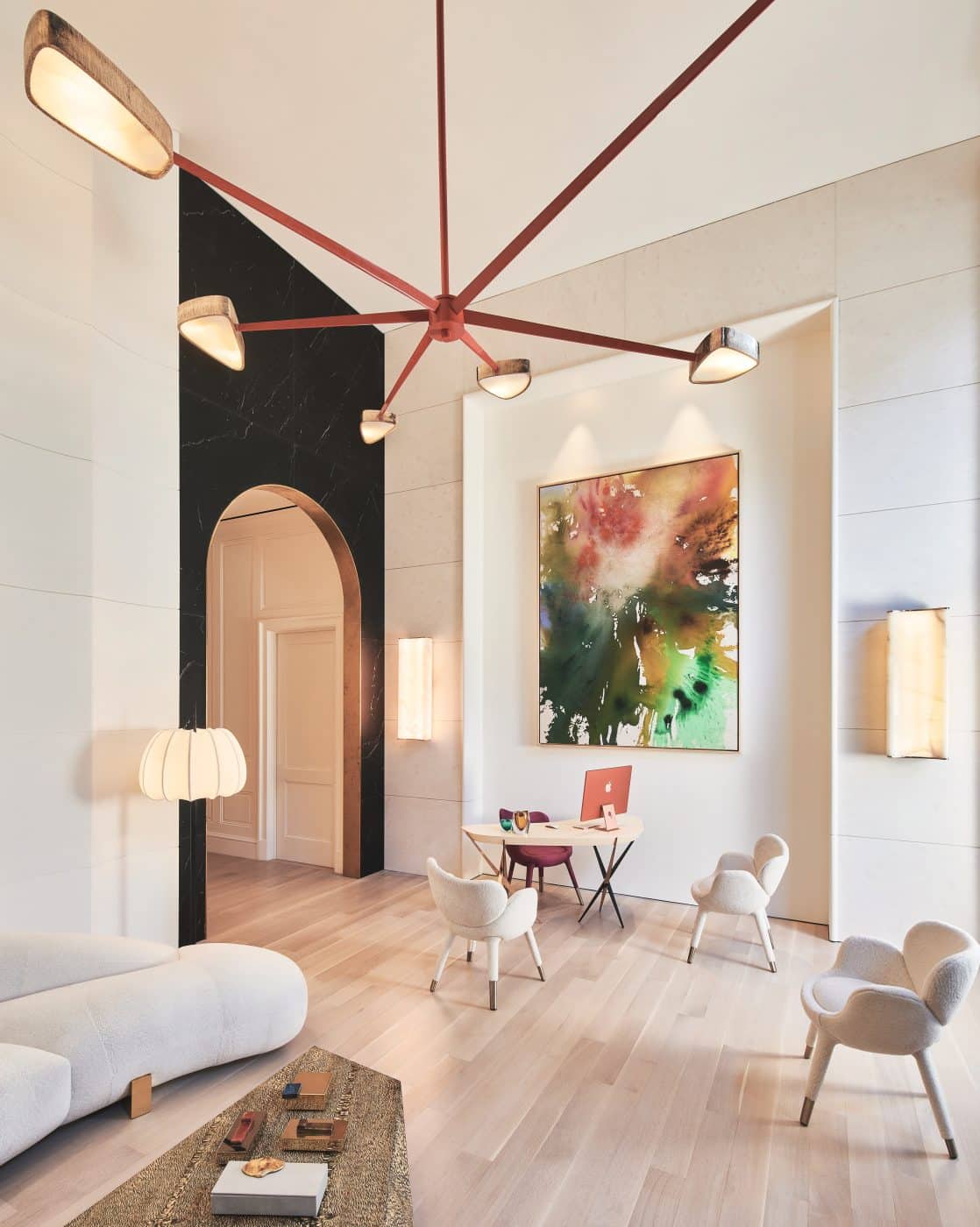
One thing that hasn’t changed in Salvagni’s world is that every piece has a backstory. Asked about the Milano chair that Drut was hugging, Salvagni explains that it’s a portrait of Milan. The three supports represent the three Roman settlements that merged into the modern city, which is almost circular, a form reflected in the round seat.
Likewise, his Papillia chair, its bulbous body lifted by six thin legs, is based on the shape of the Popillia japonica (Japanese beetle). As for his Lucy mirror, its marble frame recalls the shape of the primitive tools used by our forebears, possibly including Lucy, the 3.2 million-year-old human whose remains were discovered in Ethiopia in the ’70s. Salvagni says he is a voracious reader who often jots down ideas that later inspire designs.
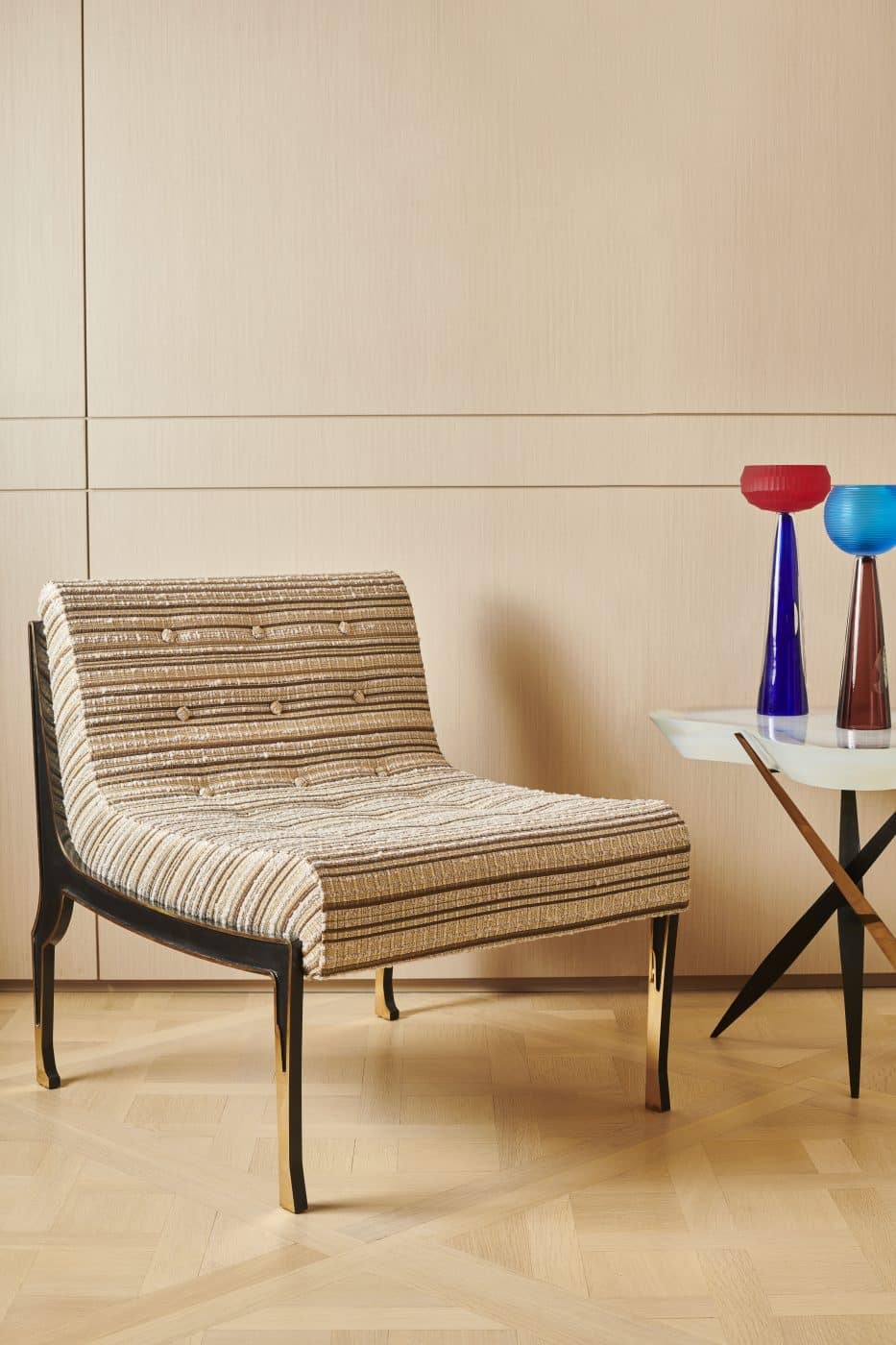
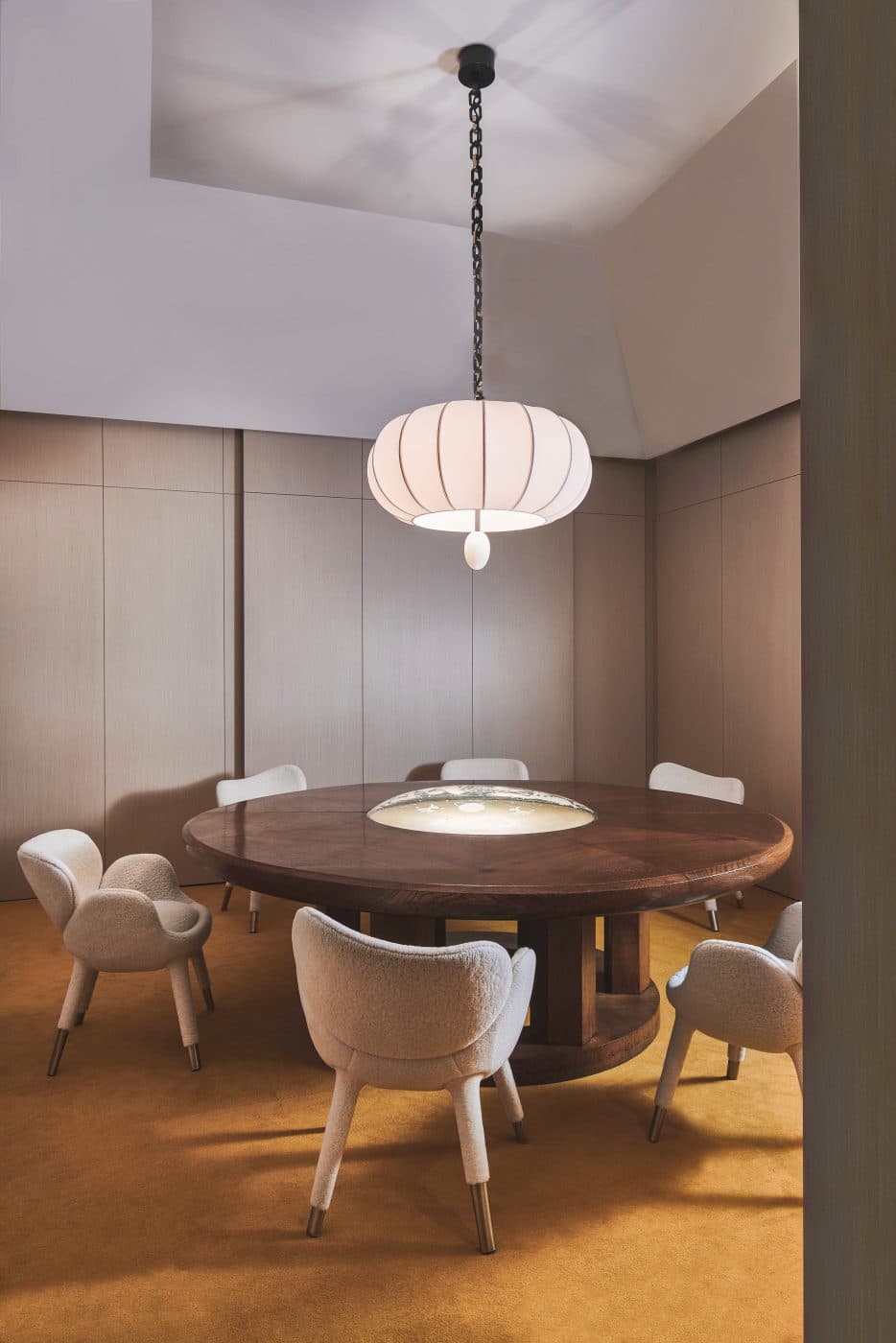
While Salvagni is describing his eclectic source material, Drut is rearranging furniture, in part so that visitors to the gallery won’t trip over a spectacular seven-foot-long bench designed by Gio Ponti for the palazzo Contini Bonacossi in Florence around 1930.
Why is there a Ponti bench in the store? It’s Salvagni’s, and it’s there for inspiration. Ponti, Salvagni says, “was an isolated man who could reach the highest level of lightness and creativity.” That’s what he aspires to. “Sometimes, I feel I’m a prisoner of myself, and I try to escape by creating something that can fly. It makes me feel freer and lighter.” Does it have the same effect on his collectors? “I hope,” Salvagni says. “That’s the challenge.”
